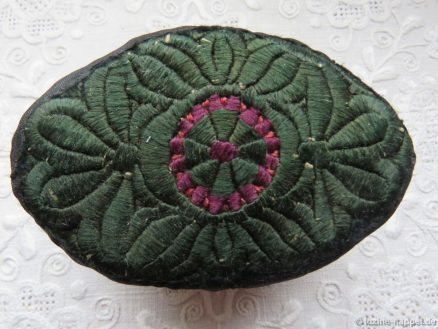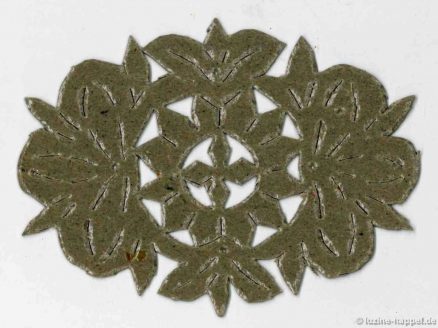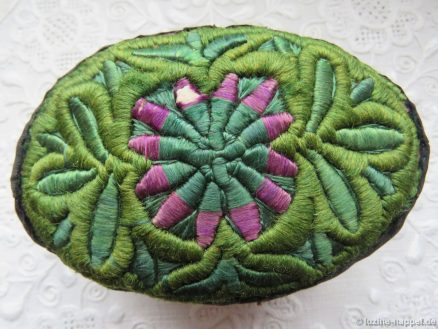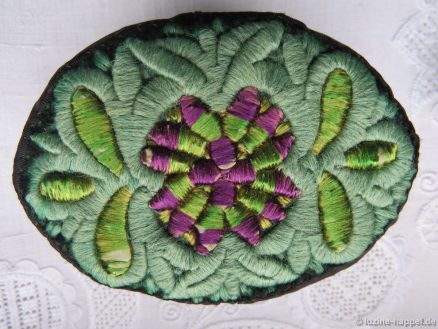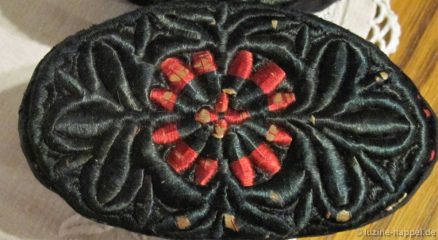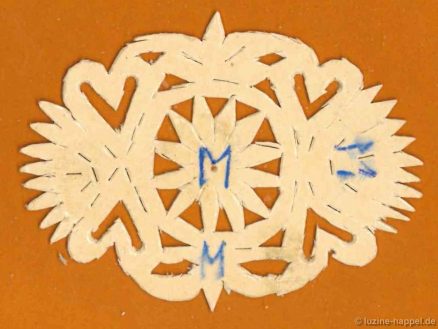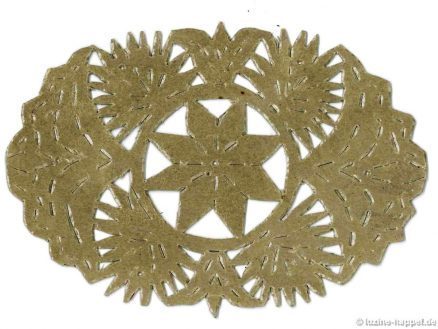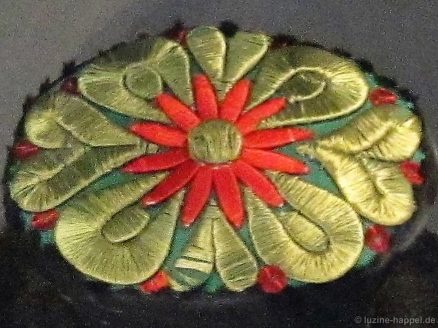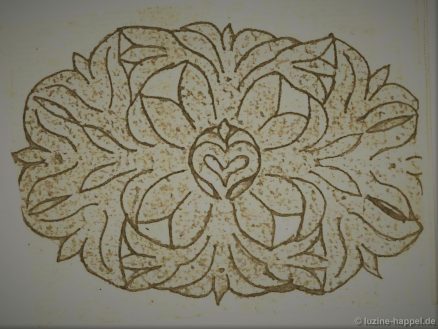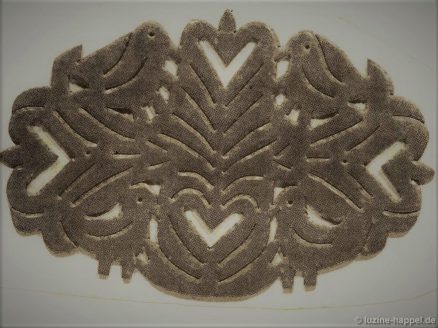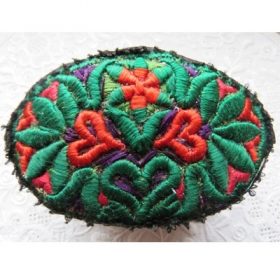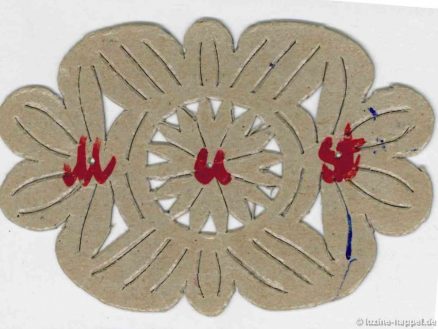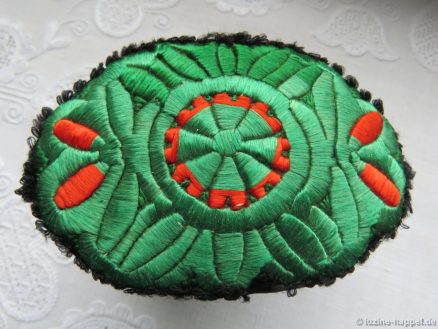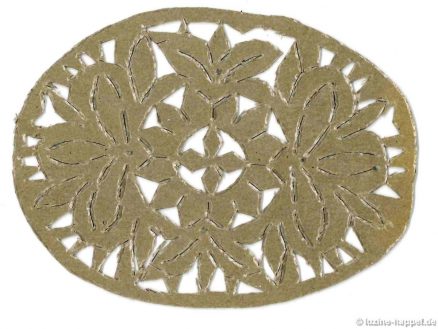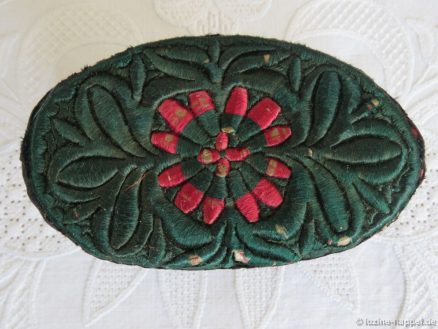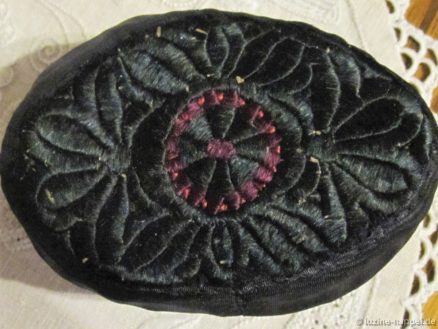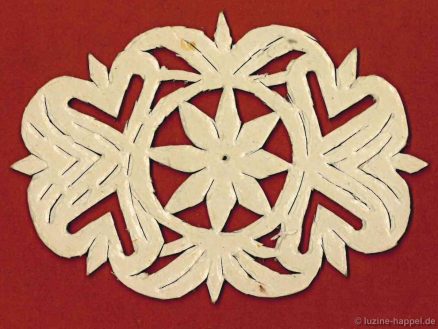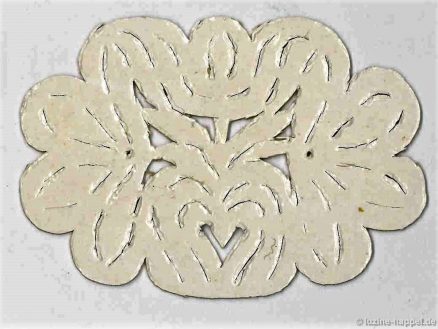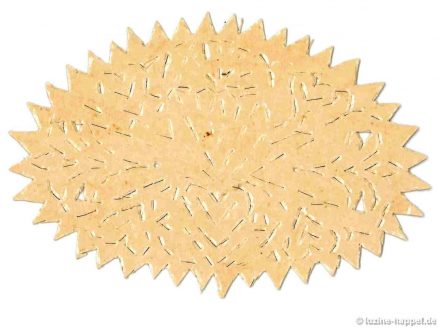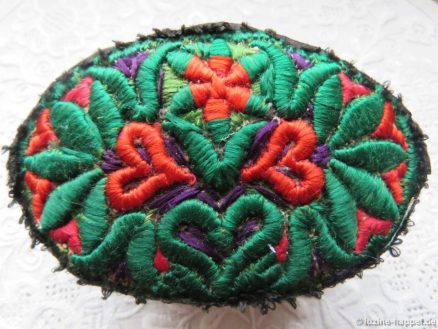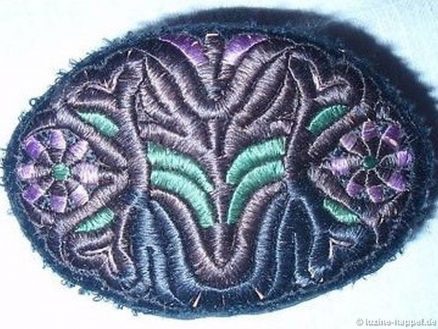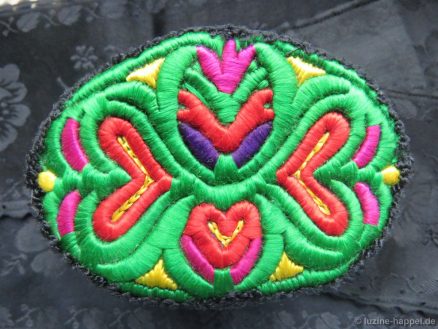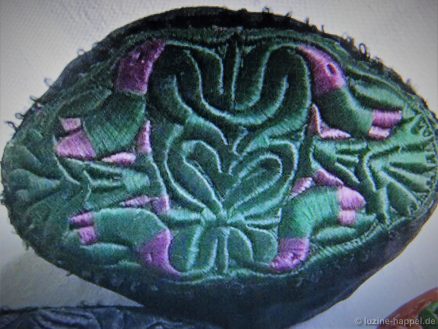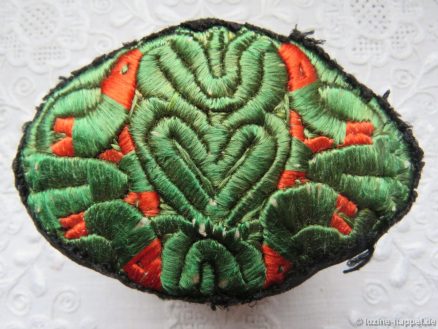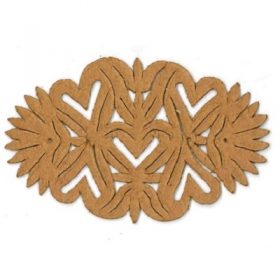Schwalm embroidery uses a finite number of motifs. Always changing combinations (motifs and colours) and arrangements decorate – in a surprisingly large number of attractive patterns – the relatively small areas of the cap bottoms. Here I will give a small insight into them.
Not all of the templates I have on hand are crafted with precision, and the caps – due to their age – are sometimes a little bit worn, but the opulence of these small traditional accessories are clearly visible.
As far as possible, I will first show the underlying template and then different embroidered examples.
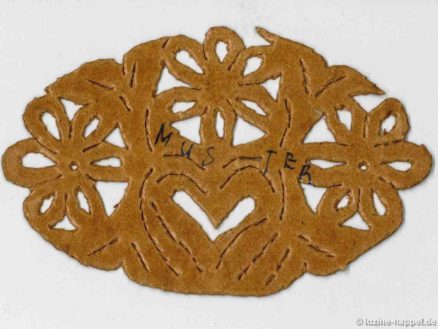
One heart with four tulips and three rosettes
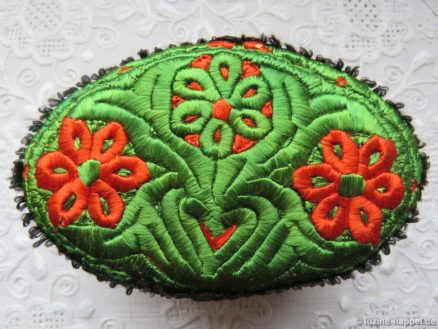
in green with red,
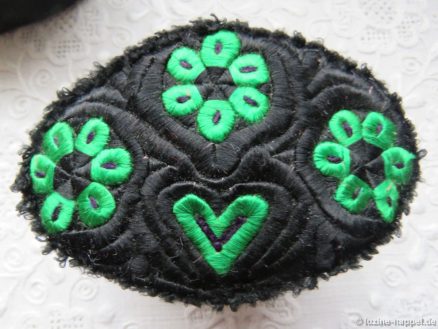
and in black with green.
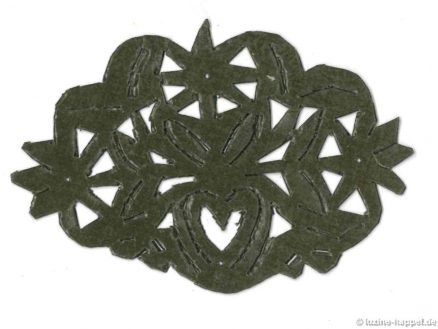
One heart with four tulips and three starflowers
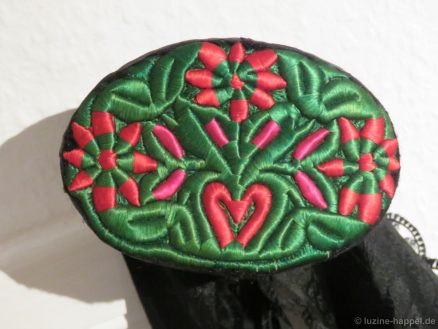
in green with red and pink,
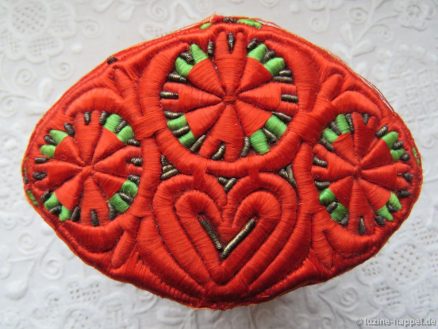
and similar examples in red with green and gold,
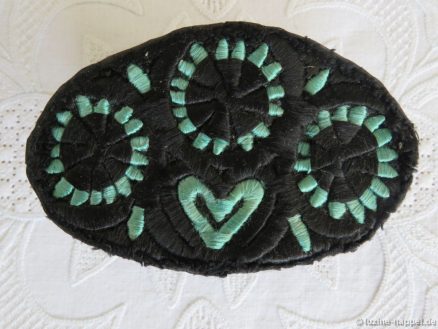
in black with green,
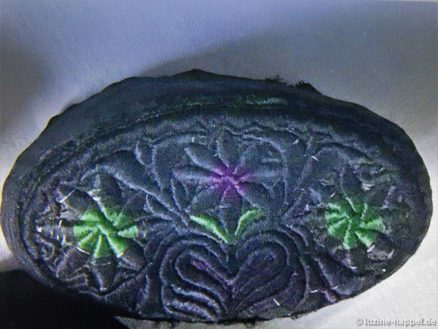
and in black with green and purple.
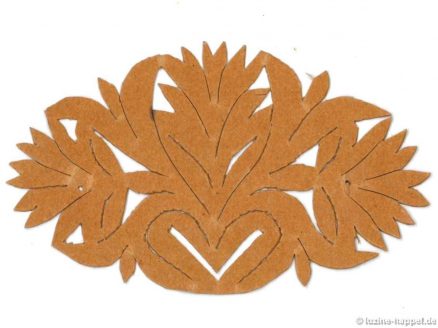
One heart with four tulips and three pinks,
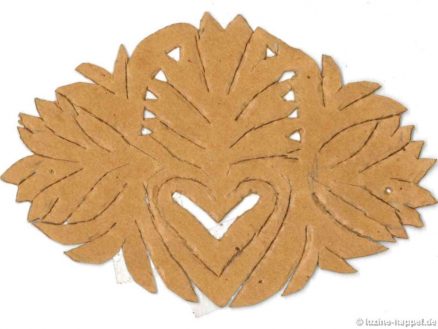
and another version of the same design
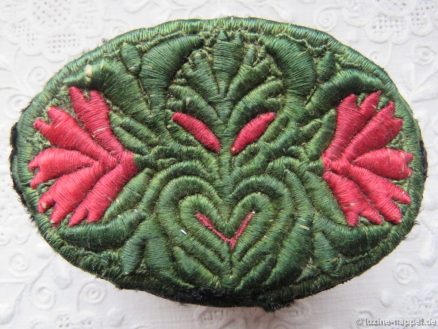
embroidered with wool in green and red,
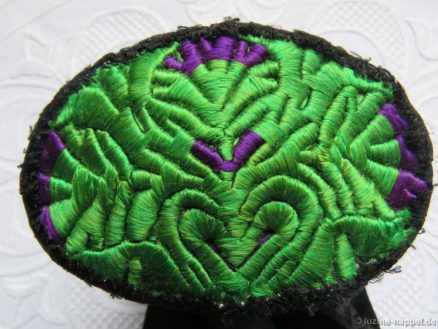
in green with purple,
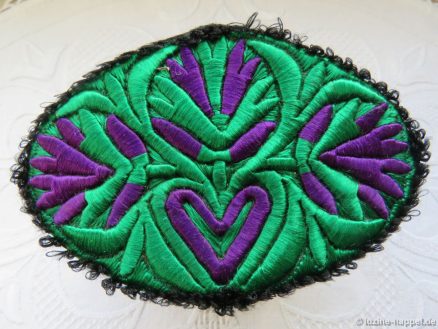
and again in green with purple,
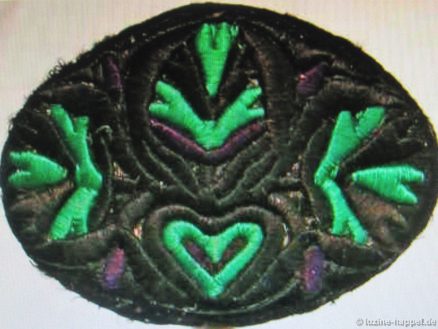
in black with green and purple,
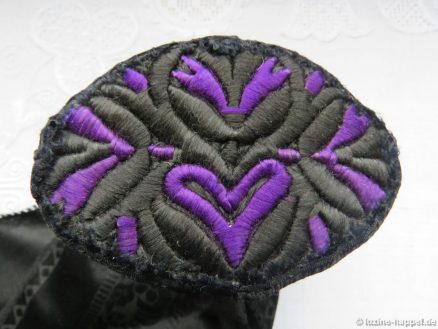
in black with purple,
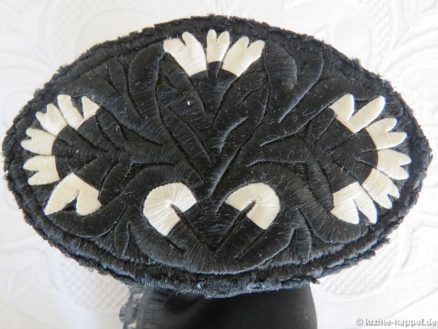
in black with white,
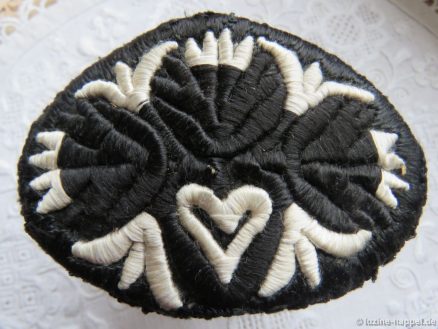
and again in black with white. The black-and-white examples show very clearly that different emphases can be established with different colour placements.
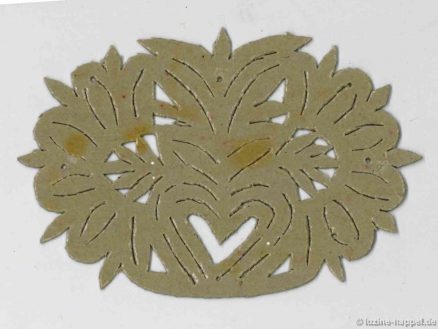
One heart with eleven tulips
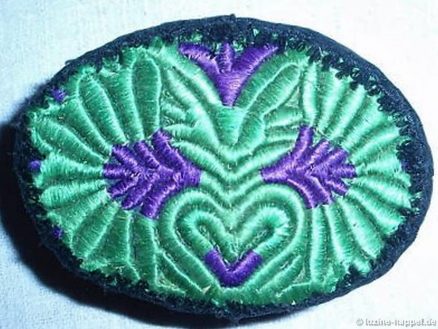
slightly modified in green with purple.
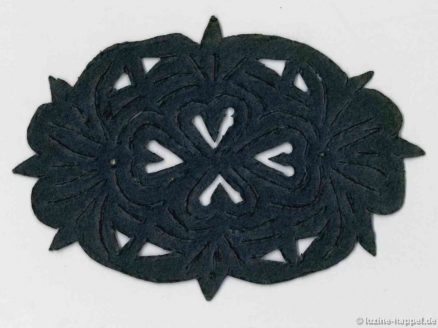
Four hearts and tulips
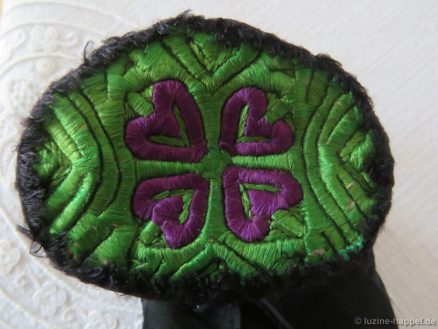
slightly modified in green with purple.
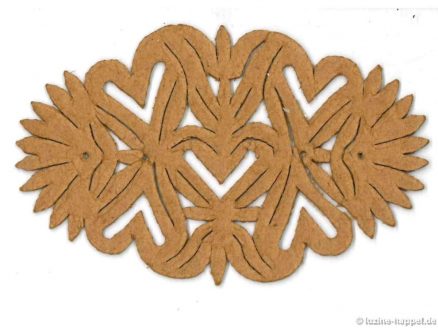
Five hearts, two tulips, and two pinks
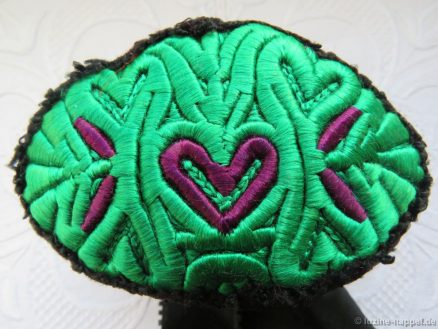
in green with purple,
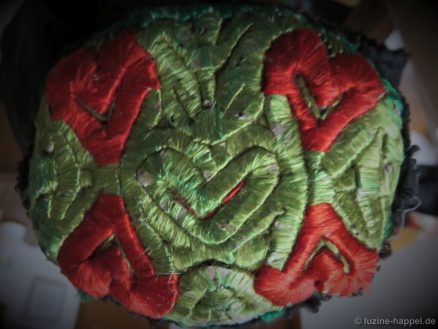
green with red,
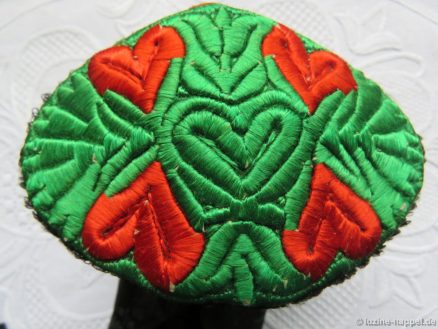
again green with red,
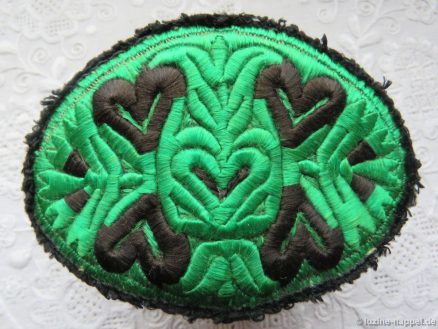
green with black,
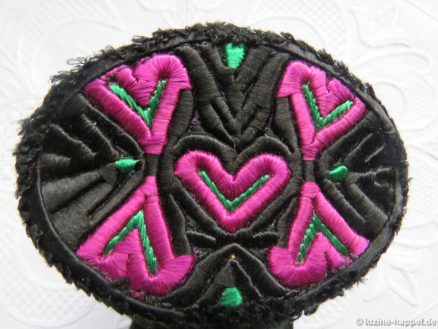
black with purple/pink and green
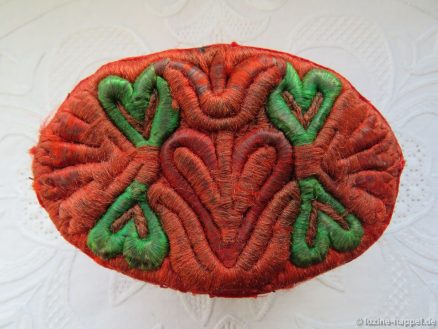
red with green,
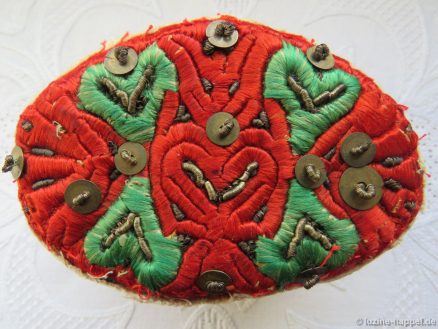
red with green and gold,
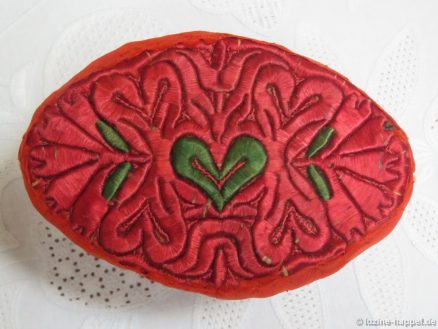
red with green,
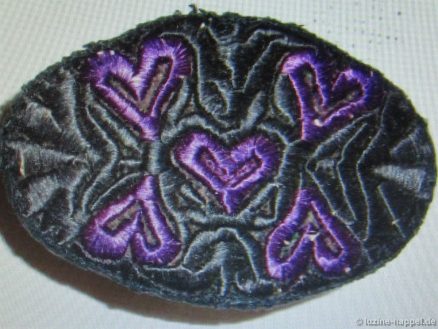
black with purple,
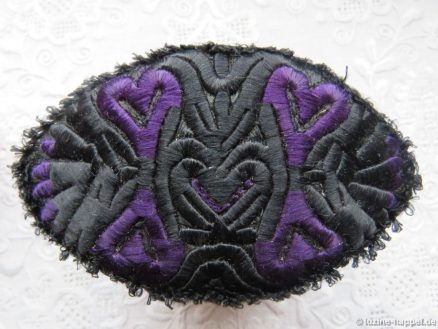
again black with purple,
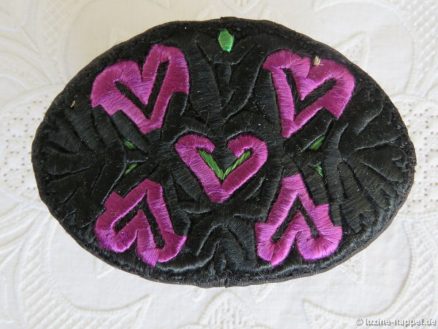
black with purple/pink and green,
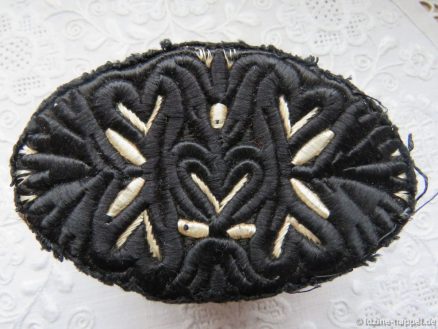
and black with white.
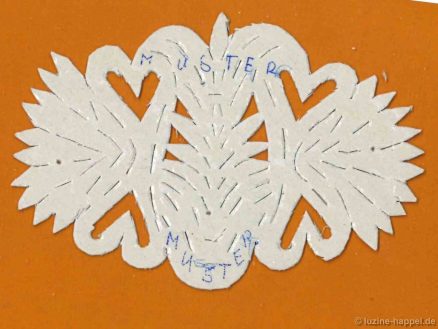
Vessel with one tulip, four hearts, and two pinks
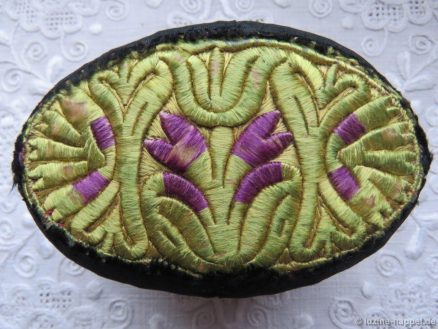
in green (much faded) with purple,
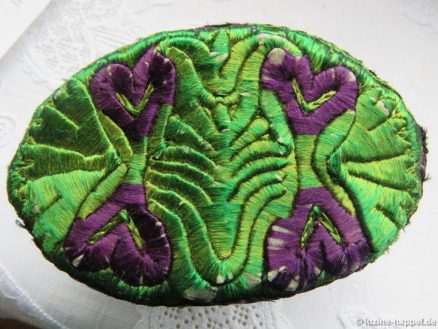
again in green with purple,
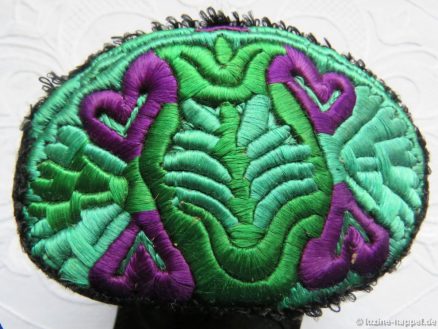
in two different greens with purple,
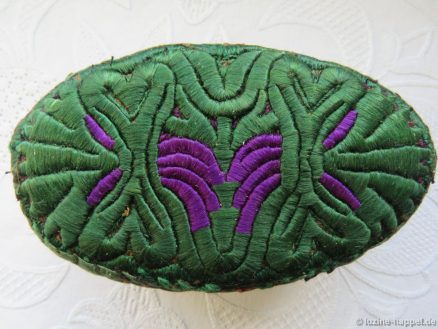
and again in green with purple,
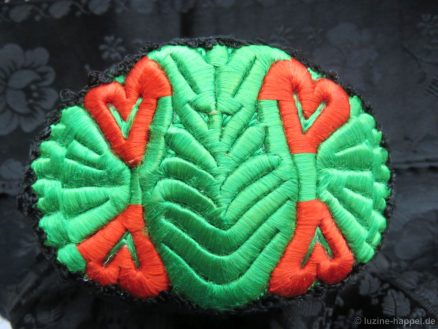
in green with red,
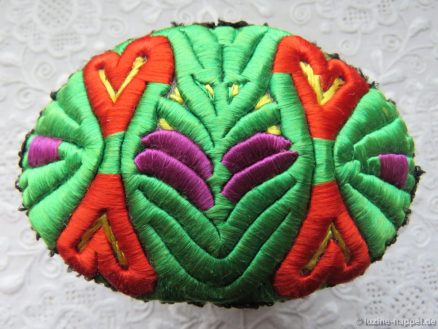
in green with red, purple, and yellow,
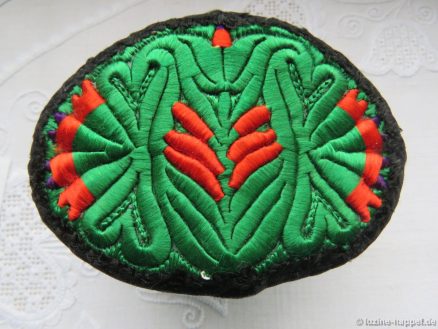
in green with red and purple,
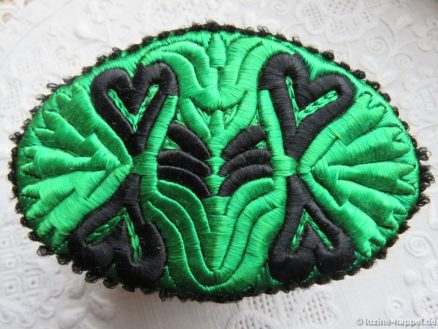
in green with black,
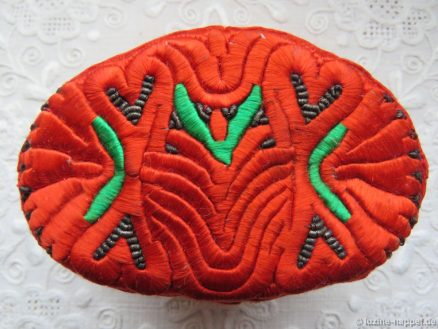
in red with green and gold,
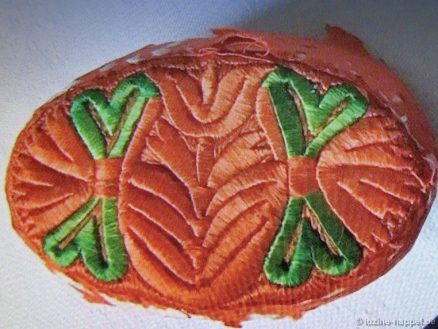
in red with green,
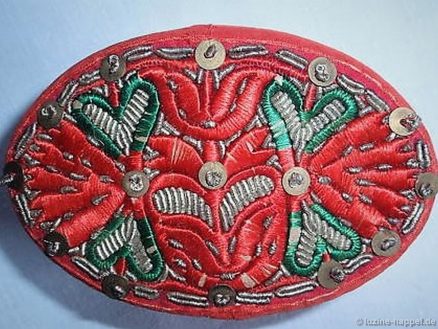
in red with green and silver,
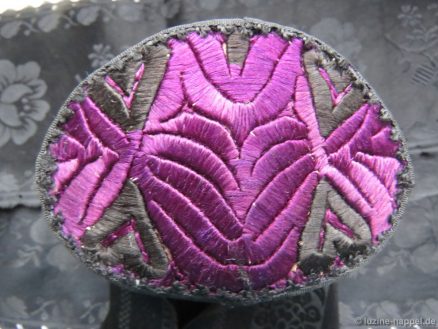
and in purple/pink with black.
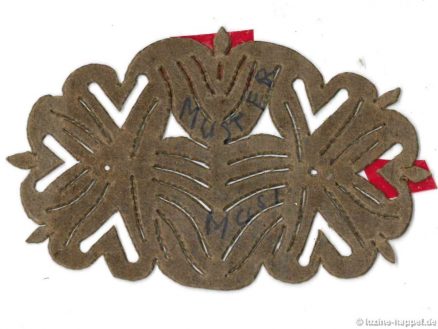
Vessel with one tulip and six hearts
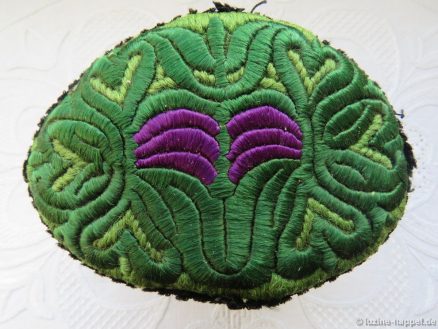
in green with purple, partially embroidered with wool,
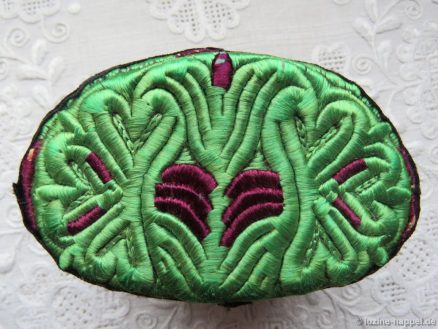
in green with purple,
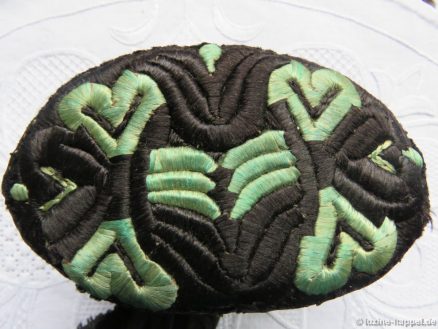
in black with green.
The last two examples clearly show that individual interpretation can vary significantly in spite of using the same templates.
Although the Schwalm costume is associated with Little Red Riding Hood, this overview shows that red caps did not predominate. I realize that this overview is based on my collection, however I think it is a true representation because red caps were only worn up to the marriage; all other colour combinations were worn from the marriage to the end of life – a much longer period of time.
This first part has shown a wide range of different patterns; a second part will follow showing even more patterns.
